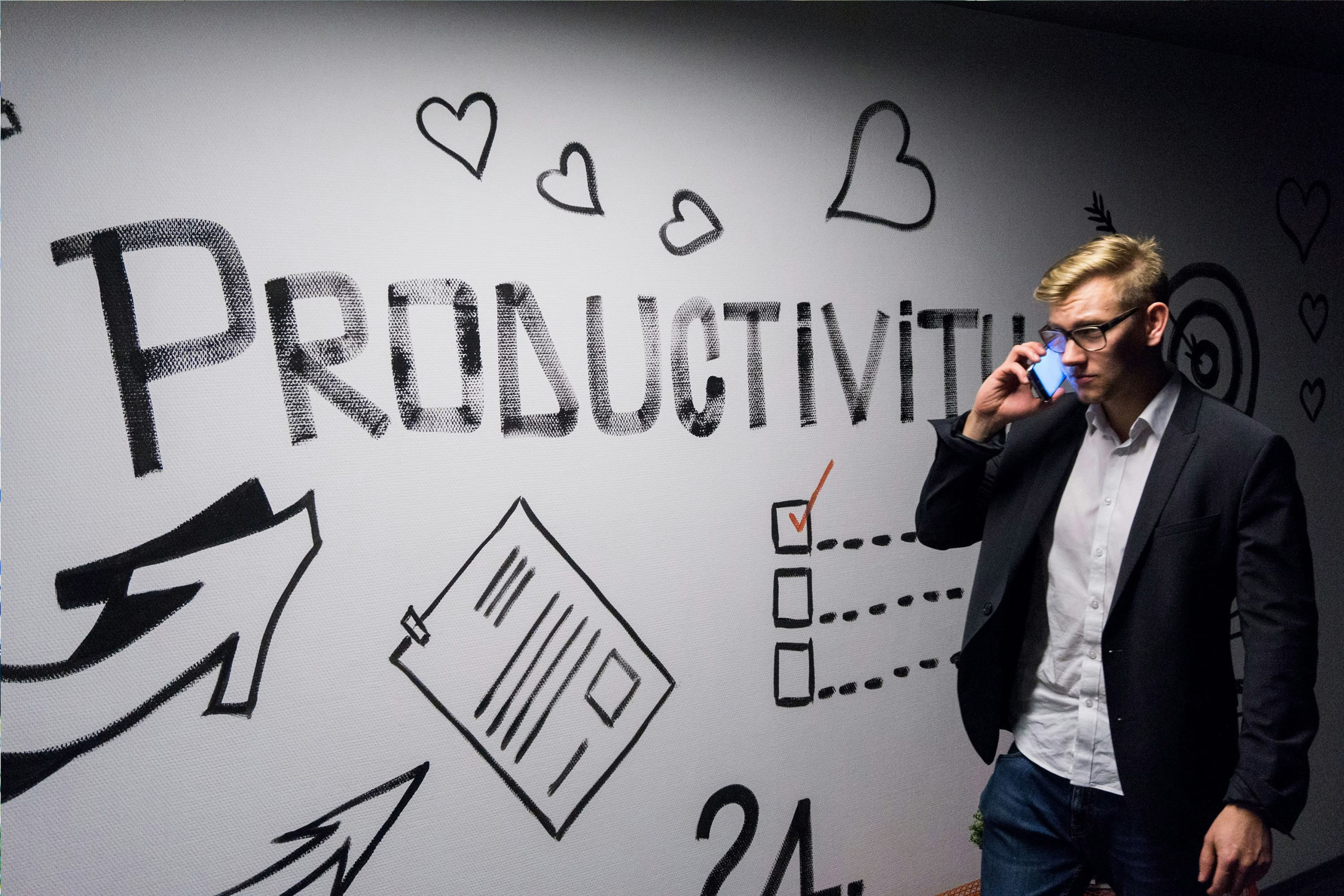Contents
Working productively and staying healthy is increasingly a balancing act for managers and employees. Achieving productivity is often a top priority for companies in today’s fast-paced working environment. Many companies are focusing on increasing efficiency and maximizing results. This blog article shows how this can be achieved and how you can implement it in your company.
Increased productivity should achieve a better result with the same input. Provided that the daily working hours for employees are adhered to, they are expected to achieve more in this time. Many employees are worried that their own health will suffer as a result. 4 out of 10 Austrians perceive burnout as a risk to their own health.
Did you know that 17% of productivity is lost when employees are exhausted or have already resigned internally?
The close link between working productively and healthy
Several studies show that there is a highly significant correlation between corporate wellbeing, better individual health and increased productivity.
In the current blog, I discuss the Gallup Engagement Index(Report on the Engagement Index Germany 2023 Germany – Gallup) and the Deloitte Culture & Engagement Survey(Employee engagement and culture (deloitte.com), among other things. Both studies have shown that there is a strong correlation between productivity and the well-being of employees.
3 core insights reinforce the opportunity to work productively and healthily:
- Work-life balance
- Psychological safety
- Employee commitment
A good work-life balance – I prefer to call it a work-health balance – promotes employee productivity.
The daily hurdle of reconciling the demands and expectations of work with the needs and obligations of the family is a source of stress for employees, especially when companies lack flexibility and understanding.
Not all tasks or private appointments can take place outside of core working hours or require spontaneous reactions. If it depends on managers or the corporate culture, it can be difficult to achieve an individually necessary work-health balance.
Often this doesn’t even happen openly, but the facial expressions and gestures of managers and internal bureaucracy can be obstacles that employees find stressful.
Employees who are able to organize their professional and private lives with all their obligations in such a way that they can balance them flexibly and independently tend to be happier, less stressed and more motivated.
The Gallup Engagement Index has shown that companies that offer programs to promote work-life balance (work-health balance) have a higher employee retention rate and a lower turnover rate. All employees who take care of their personal well-being in accordance with their current life situation and work productively and healthily are more likely to be fully committed to the company, to be involved in their own work and to deliver above-average performance.
Working healthily and productively requires psychological safety
Psychological safety is the feeling of employees that they can feel safe just as they are. They can express their opinions and ideas without fear of negative consequences and criticism.
This is particularly important in the current challenging and uncertain times. Employees who feel secure in order to work productively and healthily are more likely to express innovative ideas, come up with creative solutions or be prepared to take responsibility for risky decisions
The Gallup Engagement Index has shown that companies with a culture of psychological safety have higher employee retention and lower staff turnover. At the same time, productivity is higher, as employee engagement leads to an overall positive performance of the company.
Employee engagement is a key driver of productive and healthy work
Committed employees are more productive and produce high-quality work, both for their own company and for customers. They are more motivated and show a greater willingness to work extra hours and overtime so that their own work is completed and their own contribution has a high value for the company’s overall performance. Identification with company goals is high.
The Deloitte Culture & Engagement Survey has shown that companies that pay attention to a high level of employee engagement have higher productivity. Employee engagement refers to the emotional commitment and investment that employees make in the company. It includes their own performance as well as their identification with the company’s goals.
The founder of positive psychology, Martin Seligman, professor at the University of Pennsylvania, also showed during his last visit to Vienna that investing in “wellbeing” for employees drives up the ROI of companies.
Do you know that companies that are committed to the well-being of their employees are three times more successful?
So how can you use these results for your own company?
Invest in the promotion of employee engagement. Actively involve your employees in eliminating internal company blockers and stressors and ensure that your employees are seen and their ideas and opinions are heard.
Individual company “safe spaces” ensure the trust and anonymity of your team, because not all colleagues want to communicate their opinions openly, but still have valuable contributions to make to advance your company and work on the corporate culture.
Your employees can communicate their own needs and implement the relevant results for themselves by changing perspectives. There are also valuable contributions for the company in adapting the culture and organization to the current challenges.
Contributions from your employees that arise from joint participation are particularly valuable.





